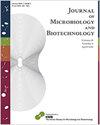使用基于模板的血凝素预测结构的机器学习可预测禽流感的致病性。
IF 2.5
4区 生物学
Q3 BIOTECHNOLOGY & APPLIED MICROBIOLOGY
引用次数: 0
摘要
深度学习为复杂的生物分类提供了一种前景广阔的方法,但这取决于是否有经过精心整理的数据集。本研究通过引入一个新颖的管道,利用开源工具将蛋白质结构转换成适合计算分析的格式,从而解决了分析三维蛋白质结构的难题。我们将二维卷积神经网络(CNN)应用于来自 64 个国家的 12,143 个禽流感病毒基因组数据集,其中包括 119 种血凝素(HA)和神经氨酸酶(NA)类型,取得了显著的分类准确性。致病性是根据是否存在 H5 或 H7 亚型来确定的,我们的模型从零层到六层中层不等,结果表明,四层模型能最有效地识别高致病性毒株,准确率超过 0.9。为了改进我们的方法,我们采用了主成分分析法(PCA)进行降维,并采用单类 SVM 进行异常检测,通过引导提高了模型的稳健性。此外,我们还通过超参数优化对 K 近邻(K-NN)算法进行了微调,以证实研究结果。PCA 确定了致病性 HA 的独特聚类,其 AUC 高达 0.85。优化后的 K-NN 模型的准确率在 0.96 和 0.97 之间,令人印象深刻。这些综合方法强调了我们的深度学习框架能够快速、准确地识别致病性禽流感毒株,从而为管理全球禽流感威胁提供了重要工具。本文章由计算机程序翻译,如有差异,请以英文原文为准。
Machine Learning Using Template-BasedPredicted Structure of Haemagglutinin Predicts Pathogenicity of Avian Influenza.
Deep learning presents a promising approach to complex biological classifications, contingent upon the availability of well-curated datasets. This study addresses the challenge of analyzing threedimensional protein structures by introducing a novel pipeline that utilizes open-source tools to convert protein structures into a format amenable to computational analysis. Applying a twodimensional convolutional neural network (CNN) to a dataset of 12,143 avian influenza virus genomes from 64 countries, encompassing 119 hemagglutinin (HA) and neuraminidase (NA) types, we achieved significant classification accuracy. The pathogenicity was determined based on the presence of H5 or H7 subtypes, and our models, ranging from zero to six mid-layers, indicated that a four-layer model most effectively identified highly pathogenic strains, with accuracies over 0.9. Enhancing our approach, we incorporated Principal Component Analysis (PCA) for dimensionality reduction and one-class SVM for abnormality detection, improving model robustness through bootstrapping. Furthermore, the K-nearest neighbor (K-NN) algorithm was fine-tuned via hyperparameter optimization to corroborate the findings. The PCA identified distinct clustering for pathogenic HA, yielding an AUC of up to 0.85. The optimized K-NN model demonstrated an impressive accuracy between 0.96 and 0.97. These combined methodologies underscore our deep learning framework's capacity for rapid and precise identification of pathogenic avian influenza strains, thus providing a critical tool for managing global avian influenza threats.
求助全文
通过发布文献求助,成功后即可免费获取论文全文。
去求助
来源期刊

Journal of microbiology and biotechnology
BIOTECHNOLOGY & APPLIED MICROBIOLOGY-MICROBIOLOGY
CiteScore
5.50
自引率
3.60%
发文量
151
审稿时长
2 months
期刊介绍:
The Journal of Microbiology and Biotechnology (JMB) is a monthly international journal devoted to the advancement and dissemination of scientific knowledge pertaining to microbiology, biotechnology, and related academic disciplines. It covers various scientific and technological aspects of Molecular and Cellular Microbiology, Environmental Microbiology and Biotechnology, Food Biotechnology, and Biotechnology and Bioengineering (subcategories are listed below). Launched in March 1991, the JMB is published by the Korean Society for Microbiology and Biotechnology (KMB) and distributed worldwide.
 求助内容:
求助内容: 应助结果提醒方式:
应助结果提醒方式:


